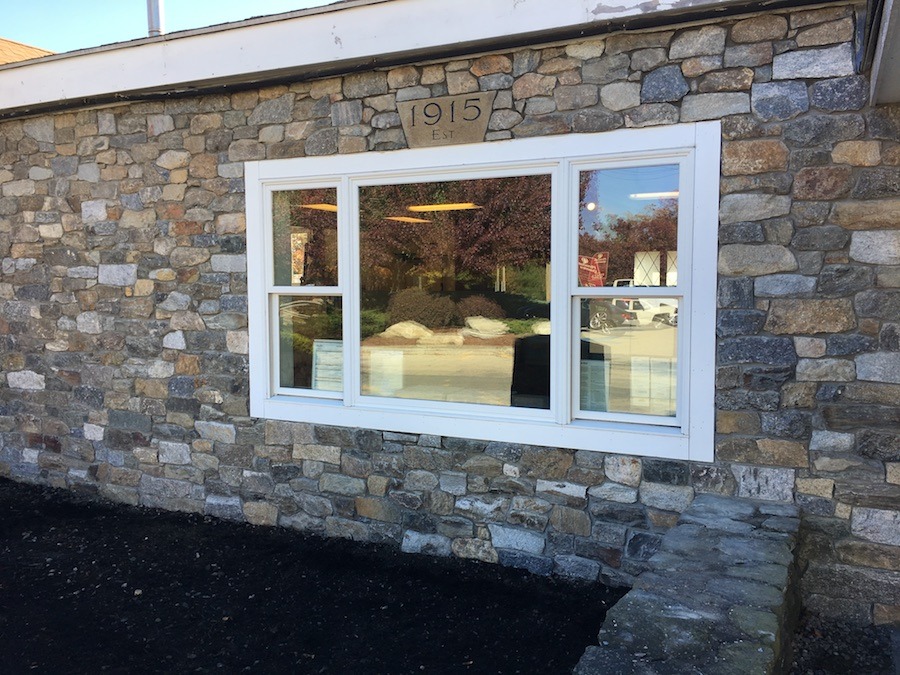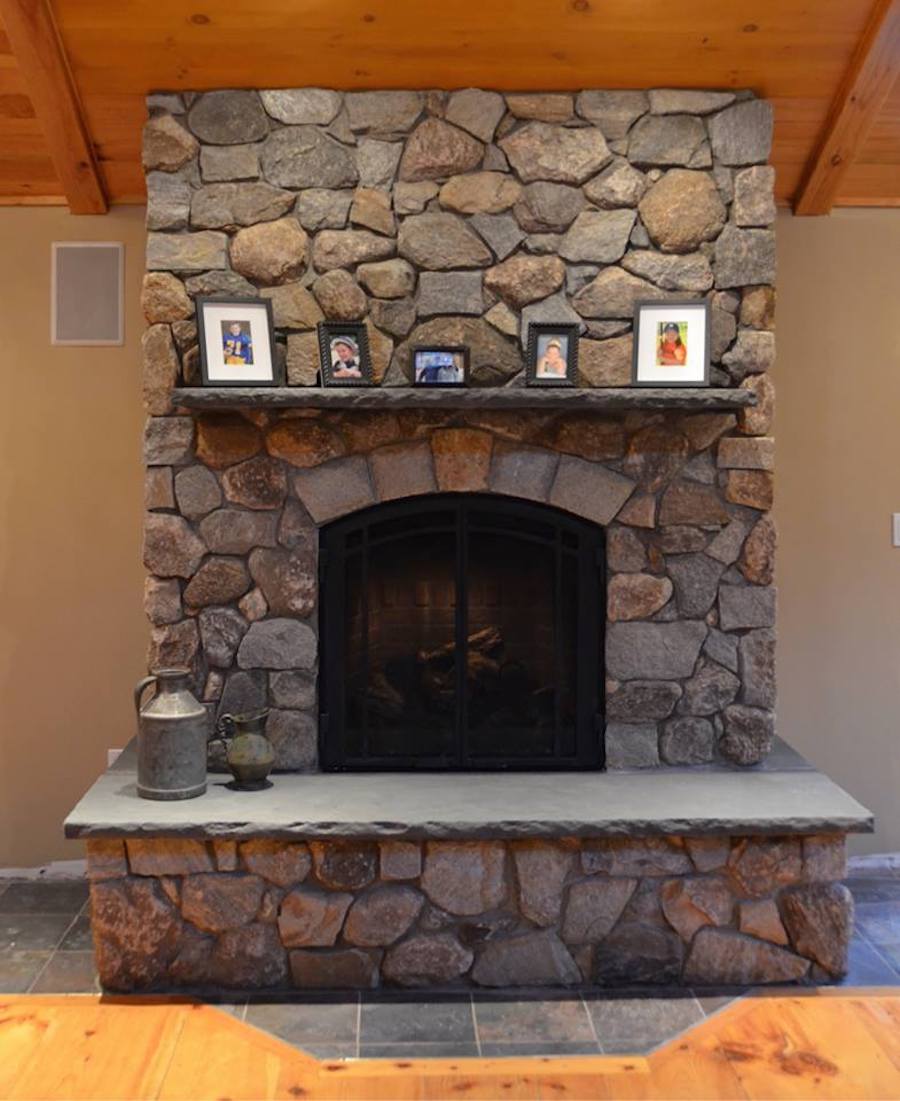I have been installing and doing outdoor design for many years, specializing in Stone Masonry/ Outdoor Design. I was the co-host of two DIY/HGTV Network shows “Rock Solid” and “Indoors Out” for seven seasons along with doing outdoor design for the PBS Television show “Victory Garden”. I along with my cousin Derek Stearns have done many Trade Show appearances and develop content for web-sites and promotions including “The World Of Concrete”. I’m very passionate about teaching my trade to the next generation along with helping homeowners and de-signers make the right choices in design, products, and instillation. My home base is Plymouth Quarries located in Hingham, MA. My cousin and I run the marketing, sales, and new product development. PQ is still a working quarry that quarries Weymouth Granite. The stone that has built and continues to build Yale, Boston College, University Of Michigan Law, and countless projects around the country. We are also one of the top suppliers in Southern New England with exclusives on products no one else has.
What is the one material that has been consistent for thousands of years in buildings around the globe? The answer is stone. If you said sand then I think we are definitely not on the same page.
Stone has been quarried for millennia and shaped by stone masons who have passed down their trade from generation to generation. The process of how we quarry, the tools we use, and the machines that move the stone have changed over time, but the stone hasn’t changed much until now.
Welcome to the world of Thin Stone Veneer.
Thin stone veneer has become the major player in the masonry world, and its here to stay. For those of you who aren’t familiar with this product, it is real stone cut to an approximately one inch thickness, and most have full-size corner pieces. Thin stone veneer, also known as an Adhered Veneer, may be used in any application full bed veneer would be used. Unlike full bed though, thin stone veneer weighs no more than 15 pounds per square foot, as opposed to full bed veneer, which could weigh over 50 pounds per square foot.
Are you stone masons out there excited yet? Well you should be. Derek and I have been doing this work for many years, and though we don’t like to admit it, it does take a toll on our bodies. The most time-consuming projects for us are those full bed jobs where we have to shape and split each stone with our stone hammer, carbide chisels, and a pint of blood. The blood comes into play when your fingers always seem to find a way to catch a corner of the stone you are cutting. I know what you are saying our there “just wear gloves.” We hate wearing gloves; it just doesn’t feel right.
The other down side with full bed veneer is the time it takes. As you know you can only go so high with fresh set veneer in a day. If you get greedy, the stone will make you pay by either moving out or falling down. You old school masons are still not buying it yet are you? We get it, because some years back neither did we.
Derek and I were purists, not interested in that thin stone. Then we did our first job, a gas fireplace insert that we couldn’t use full veneer on because there was no way to support the weight. We took our time learning how to prep the right way and to get a feel for the stone. No chisel needed, just a chipping hammer and your thigh as your cutting table. When we finished that job, it hit us like a ton of bricks, forgive the pun. We had an epiphany! We veneered with real stone, didn’t have to build a block support, had easy prep, worked inside in the middle of a Boston winter, and built a fireplace that looks like a full bed veneer in a quarter of the time. Sold!
As is the norm in our business, one job leads to the next. There are many options of thin stone veneer available: rounds, mosaic, ashlar, square, rectangular, and ledge. Most of the Quarries we worked with over the years started offering thin stone versions of their products and we jumped on that train and haven’t looked back.
Derek and I have done almost every kind of job imaginable with thin stone, homes large and small. Steps, retaining walls, wood burning fireplaces, outdoor fireplaces, fire pits, pizza ovens, backsplashes, bathrooms, outdoor kitchens, and many other types of works I can’t even remember. As of today it is a very rare occasion we would do a full bed job. You definitely would have to do some persuading to get us to even price it.
The most important part of every job is the prep work. Thin veneer is no different. The rule of thumb is masonry on masonry, no exceptions. You can veneer on cement board products in certain applications, but it is always a good idea to check with your local supplier and building inspector on codes in your area.
The first step always starts with a vapor barrier. Water and moisture are the things one has to prepare for. If we don’t, there is a heavy price to pay. When you take pride in your work, you never want a call that a stone popped off, or even worse the whole thing came down. Deal with the moisture first. There are many products on the market that are made for thin veneer applications that do a great job and are easy to install. This is where your stone supplier will help you out, and hopefully keep you updated to all the new products out in the market that can make you better at what you do.
The major road block on these water management systems is usually the price. Always remember: it is far less costly to do the job correctly the first time then to have to rectify a job. It is less costly not only in time and material, but in reputation as well. Learn as much as you are able to in regards to water management, both from the inside and the outside of the structure, you’ll be thankful that you did.
Again, the rule of thumb is masonry on masonry as, “mortar to wood no good.” If going over sheathing, then the next step is metal lathe. This will provide you something to adhere the scratch coat to. You want to make sure to use rust-resistant screws when it is attached, and there should be no flex. What I mean by that is if you push against it there should be no flex back or any loose sections. Take your time. When it’s time for the scratch coat, use a Type S Mortar which has more strength than a Type N. Make sure to cover the lathe completely with no open areas or gaps.
When your scratch coat has had time to dry, you are ready to start setting your stone. There are options when it comes to deciding what to use to set the stone. Derek and I use Type S pre-mix with a latex additive. There are many mixes out there specifically designed for thin veneer, though some you can’t use for jointing, so do your research. What you choose to use is up to you, because as we know every stone mason has certain ways to get the job done right (as long as it’s done right).
Our goal on every thin veneer job we do is to make sure when we are done that it looks like a full bed veneer. Remember, we are working with real stone not concrete. Because thin veneer is easily cut, masonry crews are using diamond blades to shape each stone to the point where it looks fake or like a tile job. I constantly hear “tight joints” from customers and I respond by saying “you mean consistent joints.” No job should have large ugly joints. That’s not what I’m saying.
The best full bed veneer jobs have consistent half inch or slightly less joints that are recessed. Joints do have a purpose, especially in areas that have harsh winters where expansion and contraction are serious issues. Instead of taking out the diamond blade for every cut, we shape the stone with our chipping hammer. This gives the cuts a natural look and doesn’t change the character of the stone. We believe it keeps the thin veneer looking like a full veneer, and most importantly doesn’t make it look like a tile.
If you don’t have experience with hand cutting stone, it may take some time to learn how to use your chipping hammer. But once you master this skill, you will never go back to the diamond blade as your primary tool. Of course, there are instances where the diamond blade is a huge help, especially with cutting the heights and widths of corners. You don’t want to use you chipping hammer on corners, if they break it will be very costly because some corners can be over $20 a linear foot.
The thin stone veneer business has grown immensely around the country and because of that, there are always those fly-by-night fabricators that jump in and are not prepared or qualified to be in the business. Their stone may not always be consistent, which on a large job could get you in trouble.
I have heard the horror stories of masons on large jobs that just needed a few hundred square feet to finish, and when the stone arrived it was completely different than the thousand square feet that was already installed. How do you fix that?
We have used stone from various companies over the years and must say there is a difference in quality. Buyer beware! Make sure to see the product your are buying. Try not to order from just seeing a sample board, though in some cases this may be your only option. If possible, walk the yard of your supplier to see the stone on pallets, in natural lighting. As you may be already aware of, stone varies in color, texture, and size. A sample board may only be able show you a small piece.
One major part of what sets companies apart is their corners. Corners are 90 degrees, not 45 degrees (or somewhere in between). I can’t tell you how frustrating it is to be on a job trying to plum corners using a product that has no right to be called a corner.
Thin stone has changed the market for the better. It has given stone masons more opportunity to do jobs that weren’t possible before. The way you prep the job might change with new techniques and products, but the philosophy on the actual setting of the stone hasn’t changed.
Start from the corners and work your way in balancing color, ratio, and consistent joints. Our world of masonry products might change, but great work stays the same century after century. Which is fitting; we honor those who came before us in the work we do.

